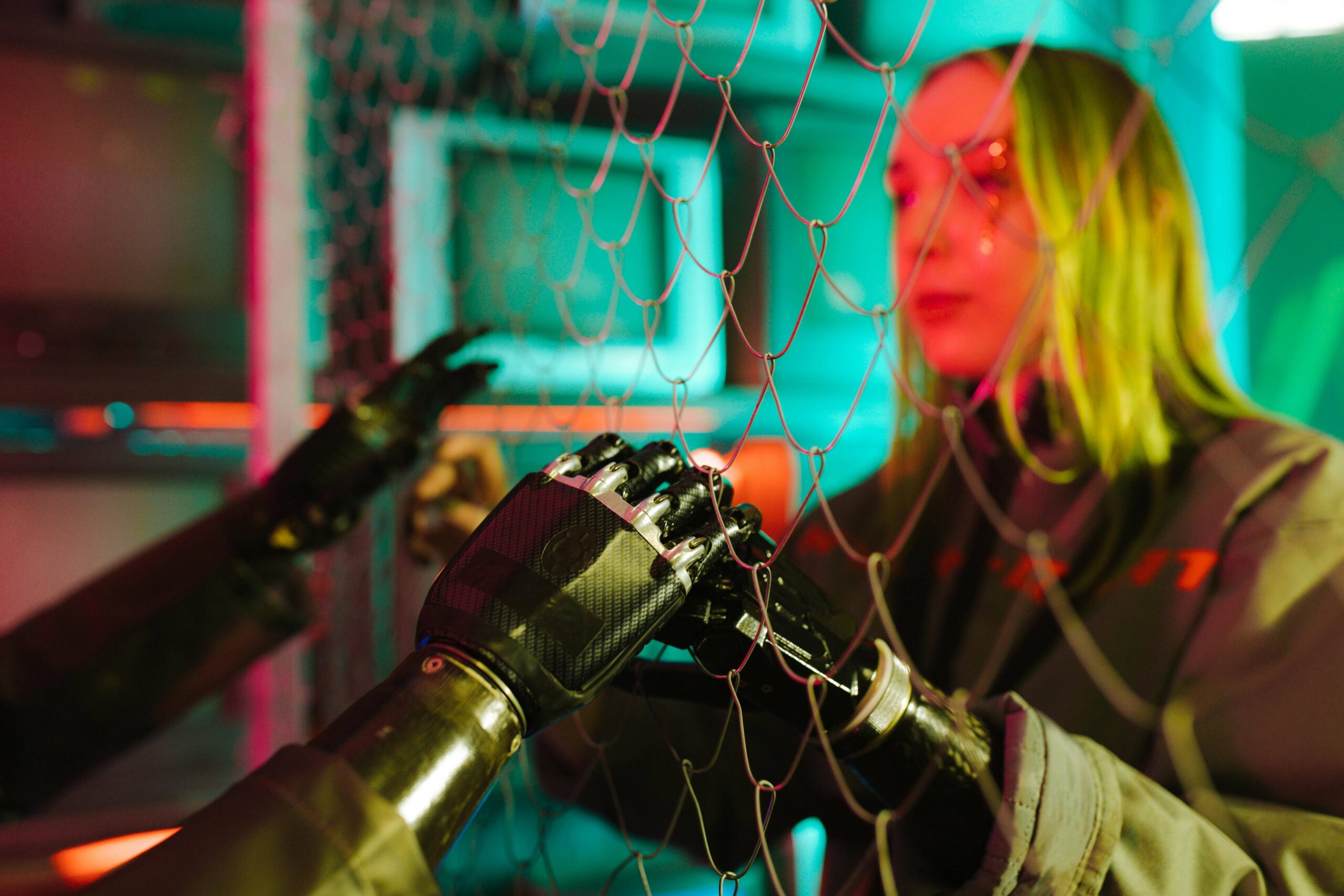AI fundamentally reforms the economies, industries, and even the frontier of possibility in areas related to entertainment, healthcare, and financial services. The essential question that arises is whether, as we forge ahead with embedding AI into daily life, human intelligence and artificial intelligence represent complementary forces that cooperate or are destined for competition, wherein AI will someday replace human roles. The character of AI, human intellect, its advantages, disadvantages, possibilities of productive coexistence, and cooperation are dealt with here.
Understanding AI and Human Intelligence
What is Artificial Intelligence?
The general definition of artificial intellect speaks to the capability of machines to simulate cognitive processes commonly appearing with human intellect: learning, reasoning, problem-solving. By applying methods like machine learning, deep learning, and neural networks, AI systems are enabled to analyze voluminous data, establish patterns in it, and even make forecasts with an incredible percentage of accuracy.
What is Human Intelligence?
In addition to data-driven reasoning, human intelligence incorporates emotional, social, and creative elements propelled by experience, cultural knowledge, and abstract thinking. These qualities give humans a lead in characteristics such as adaptation, creation, and empathy-skills that artificial intelligence can hardly imitate.
Strengths and Limitations of AI
Strengths of AI
Speed and Scalability: AI is faster than humans at processing large volumes of data in a matter of seconds.
Accuracy: By identifying minute patterns in complicated data, AI can reduce errors in domains like diagnostics and predictive analysis.
24/7 Functionality: AI systems are more productive in sectors like customer service and logistics because they can operate around the clock without becoming tired, unlike people.
Limitations of AI
Absence of Creativity: AI is very good at identifying patterns, but it has trouble with originality and abstract thought.
Lack of Emotional Intelligence: AI’s use in professions that demand empathy, including counseling and negotiating, is constrained by its inability to comprehend and react to human emotions.
Dependency on Data Quality: The quality of the data that AI is trained on has a significant impact on its performance. Biased or poor data can feed societal biases and lead to erroneous forecasts.
Strengths and Limitations of Human Intelligence
Strengths of Human Intelligence
Flexibility & Adaptability: People are able to quickly come up with creative ideas and adjust to changing circumstances.
Emotional and Social Intelligence: Understanding emotions, cultural settings, and social cues enables people to perform well in jobs requiring face-to-face communication. This is known as emotional and social intelligence.
Creative Problem-Solving: People are capable of thinking beyond statistics and algorithms, coming up with original ideas and producing literature, music, and art.
Limitations of Human Intelligence
Cognitive Biases: People are prone to prejudices that might impair their judgment and ability to make decisions.
Physical and Mental Fatigue: Humans require rest, unlike robots, which restricts their ability to work continuously.
Processing capability: Data-intensive or highly analytical operations may be limited by the limited speed and capability of human brains.
Are AI and Human Intelligence Complementary or Competitive?
01. Complementary Roles in the Workforce
AI and human intelligence are being seen more as complements than substitutes in the workplace. While AI sifts through medical data and provides possible diagnosis, the doctor has to make final choices based on his or her knowledge and experience, factoring in areas of a patient’s life that AI cannot fathom. This collaboration improves patient outcomes and raises efficiency.
02. Collaborative Creativity in the Arts and Sciences
AI is increasingly being utilized in scientific research, the arts, and even in music. While compositions and art made through AI could perhaps inspire future works, human interpretation and improvement are still essential. Humans provide the insight and creativity to formulate ideas and test potential solutions, while AI is used to aid scientists in complex data sets. In this manner, AI and human intellect prove indispensible because of such collaborations that speed up the pace of discovery.
03. Competitive Aspects in Routine Jobs
Automation replaces human employment in industries like manufacturing, customer service, and data input through repetitive operations. In as much as this decreases operating expenses, it is viewed as a job displacement problem. This competition, however, often pushes man to move toward more intricate, morally motivated positions that make use of distinctively human abilities such as creativity, emotional intelligence, and critical thinking.
The Future: AI and Humans Working Together
Education and Upskilling
As AI assumes more of the analytical and routine work, there is a rising demand for education programs that train people in the skills that robots can’t easily mimic. Classroom teaching focused on creativity, problem-solving, and emotional intelligence can help ensure that the future will be more capable of adapting to a job made by the collaborative action of AI and human intelligence.
Ethical and Responsible AI Development
The responsible development of AI would ensure a path where integration between AI and human intellect is done in an ethical way, with no violation of human rights or increasing inequality. Moreover, for building trust between AI and humans to develop each other, there needs to be transparency in algorithms of AI, reduction of prejudice, and accountability frameworks, which would be important in that process.
Conclusion: Building a Collaborative Future for AI and Human Intelligence
Both human and artificial intelligence have their own strengths, with certain advantages and disadvantages. Combined, AI is able to manage huge databases and perform routine jobs, freeing humans to think strategically, be creative, and exercise empathy. Although there might be competitive dynamics in certain areas, the future of AI and human intelligence is more collaborative; it’s from there that the capability for changing industries and improving people’s lives emanates.
We create a different tomorrow, one where human and artificial intelligence are valued and enabled in their complementary qualities.
